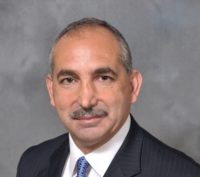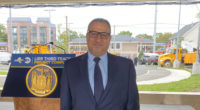Born in Pakistan, Chaudhry’s first flight occurred at age 2, she says, when her family moved to Leeds, England. Her interest in aviation grew from both her own travel experiences and from watching shows like Star Trek. After purchasing a toy Barbie airplane as a child, she grew excited by the possibilities of aviation but was disappointed that Barbie was not the pilot. She financed her education at the University of South Carolina, working full-time at the South Carolina Dept. of Transportation engineering division.
After graduating with a B.A. in political science and government, Chaudhry worked for a real estate law firm and a solid waste consulting company. Several years later, she earned a Masters in Healthcare Administration. In 2009, she founded American Infrastructure Development, initially as a general transportation consultant before deciding to focus on aviation. Through cooperation with local municipalities and local aviation industry leaders such as Tampa International Airport, the firm has become a major sector player, with clients at more than 70 airports across the U.S. She is also a licensed pilot.
Chaudhry chatted with ENR Transportation Editor Aileen Cho. The interview has been edited and condensed.
ENR: How did you get into this industry?
Chaudhry: I worked in the public sector for awhile with the [South Carolina] transportation department, in engineering. From there I went into real estate, law and environmental consulting; landfill and solid waste disposal; and healthcare. I was a little all over the place. All these industries prepped me for the role I have today. My company started as a project management firm. From there, we did real estate and law, commingled in aviation.
I've always loved aviation. [Our family] hopped on planes to England and Canada from Asia. I was mystified by and loved airplanes. When the opportunity came to work in transportation, I could have stuck with roadways and bridges, but decided on aviation – there was plenty of work. In 2009, people were losing jobs – I had a lot of people looking for work. I grew the company from engineering into planning as clients' needs grew, [and] I was able to develop relationships with individuals and added more services. The most recent is architecture.
What kind of projects are you working on?
We have a myriad of projects with private and public clients. We've done runway rehab projects. Now with architecture expertise, we can do work for airports, fixed-base operators, terminal additions. We work mostly at general aviation airports. We're a boutique aviation firm.
What was your experience like as a woman of color starting out?
There are a lot of women and people of color in the industry. Aviation is very inclusive. When I started, it was and still is competitive. All industries have their challenges. My biggest wasn’t as a female, more just as a new entrant. I do have certifications due to minority and gender, but I think it’s all about the relationships.
Outreach opportunities, meeting primes, that’s helpful. There are so many new entrants, so it's very challenging. You just take it, smile and do a stellar job no matter what. Most of our clients come through referrals and reputation.
What are trends you're seeing and what's in the future for the firm? Sustainability. One of our signature projects is a full-depth reclamation—grinding up asphalt, putting in a new runway. That saved the owner about $300,000. With the addition of architecture, we now can do civil and vertical work. We can also do planning to concept to design and engineering. We also do inspections. We’re working on [Small Business Administration] certification, and doing a design for MacDill Air Force Base. We want to do more military work.
We've done millions of square yards of pavement design over the past 15 years. By the end of 2024, we willl have almost $100 million in revenue—not because of me, but because of a stellar team, with long-term members.






Post a comment to this article
Report Abusive Comment